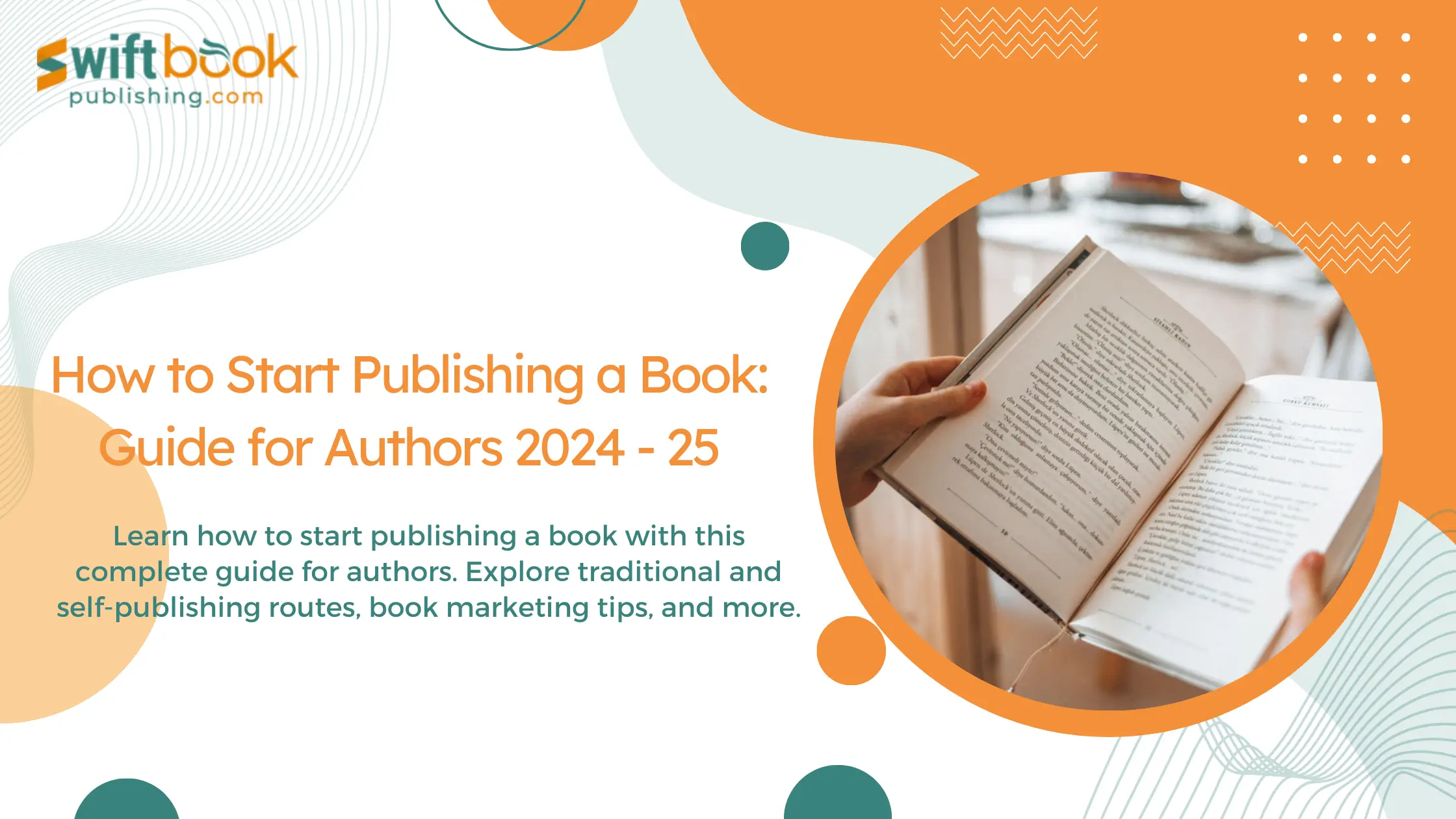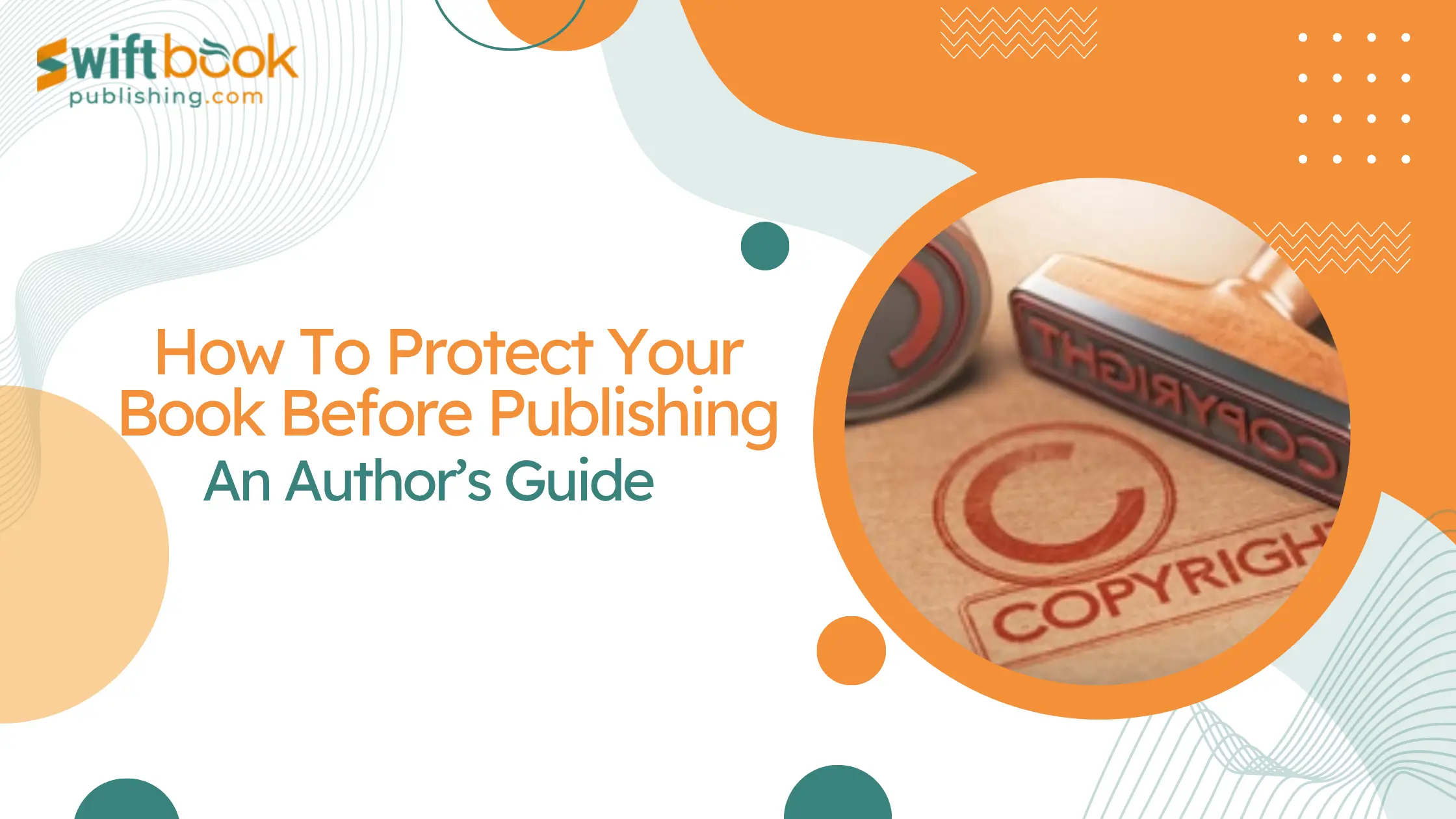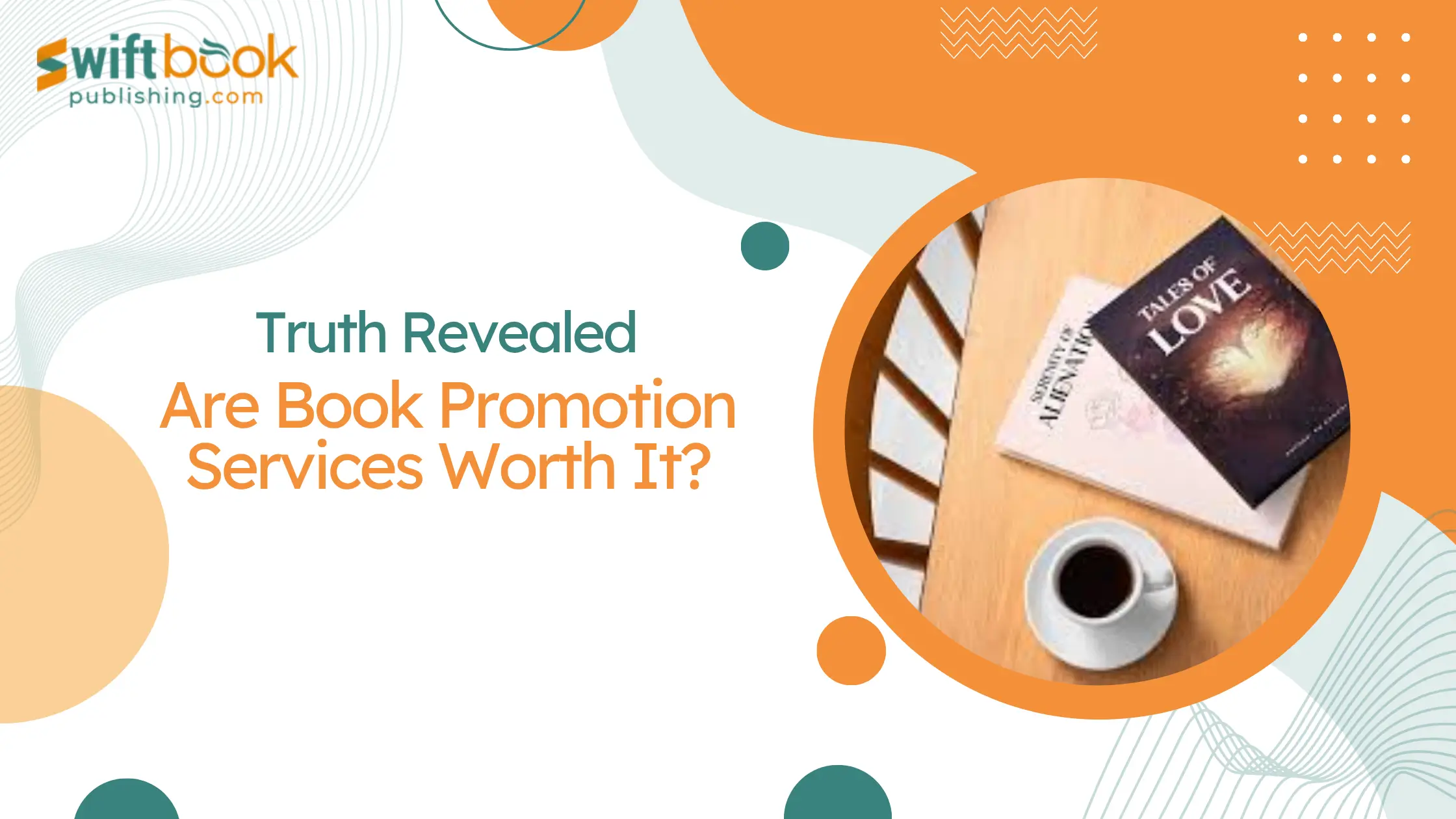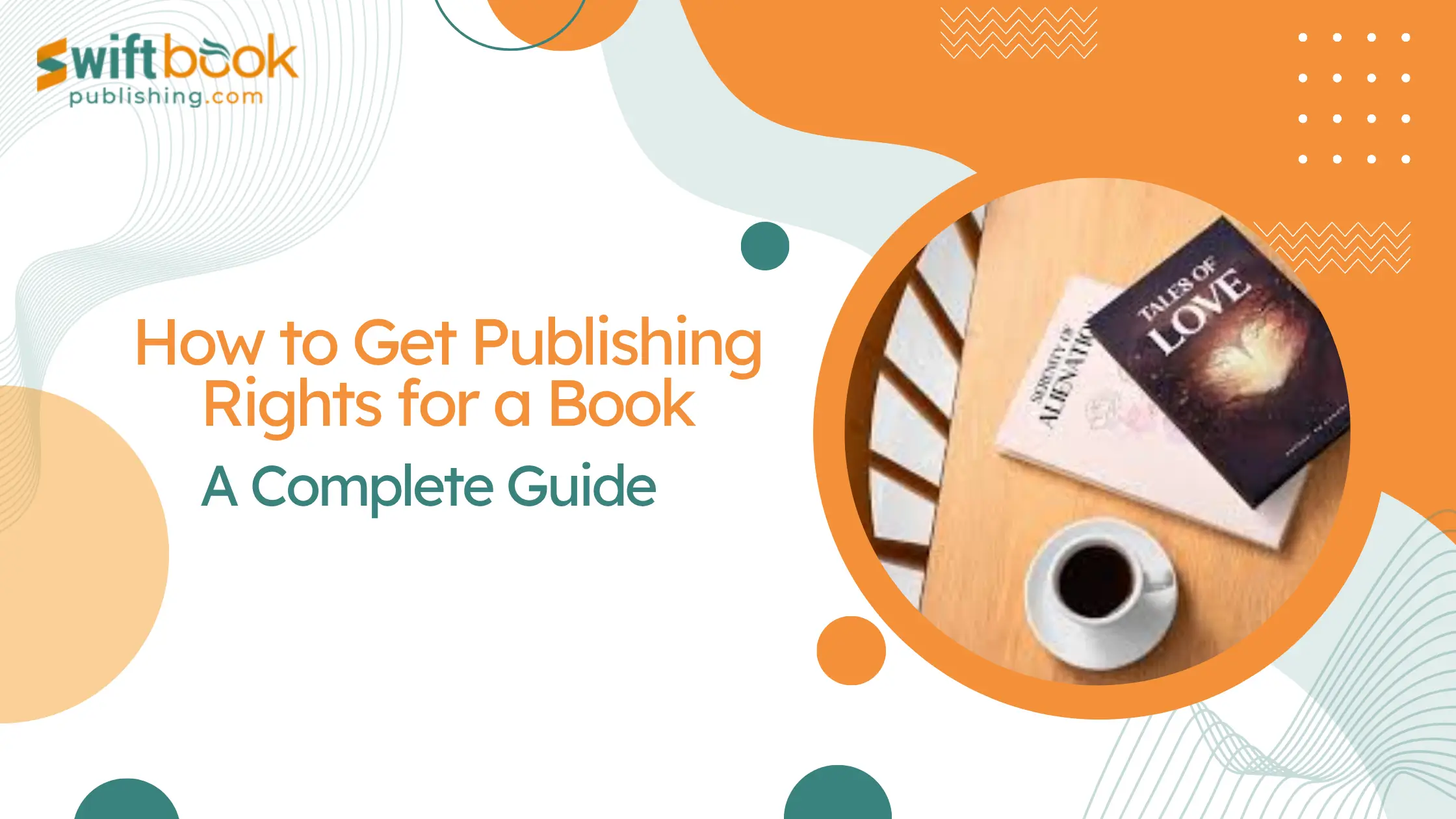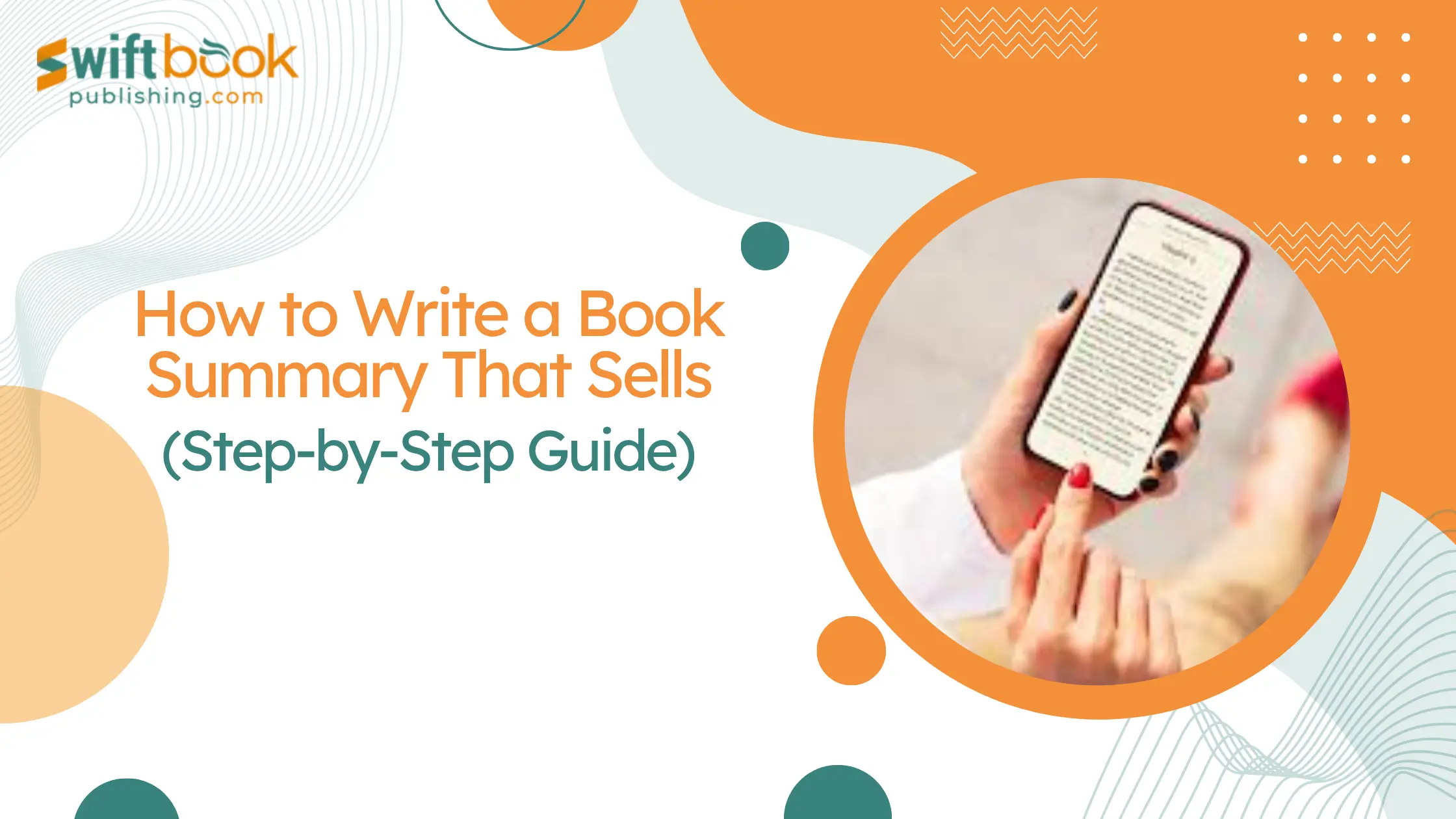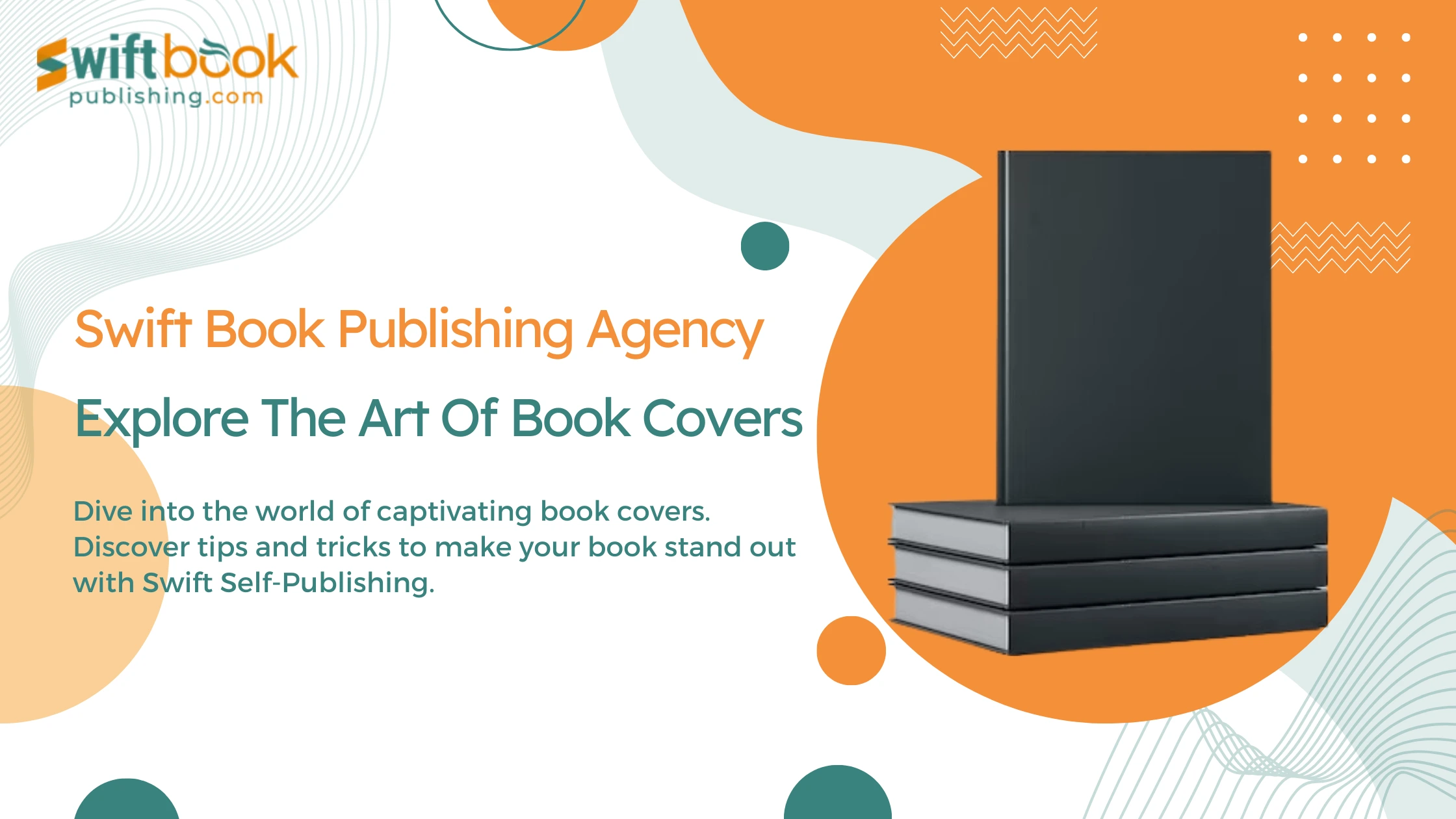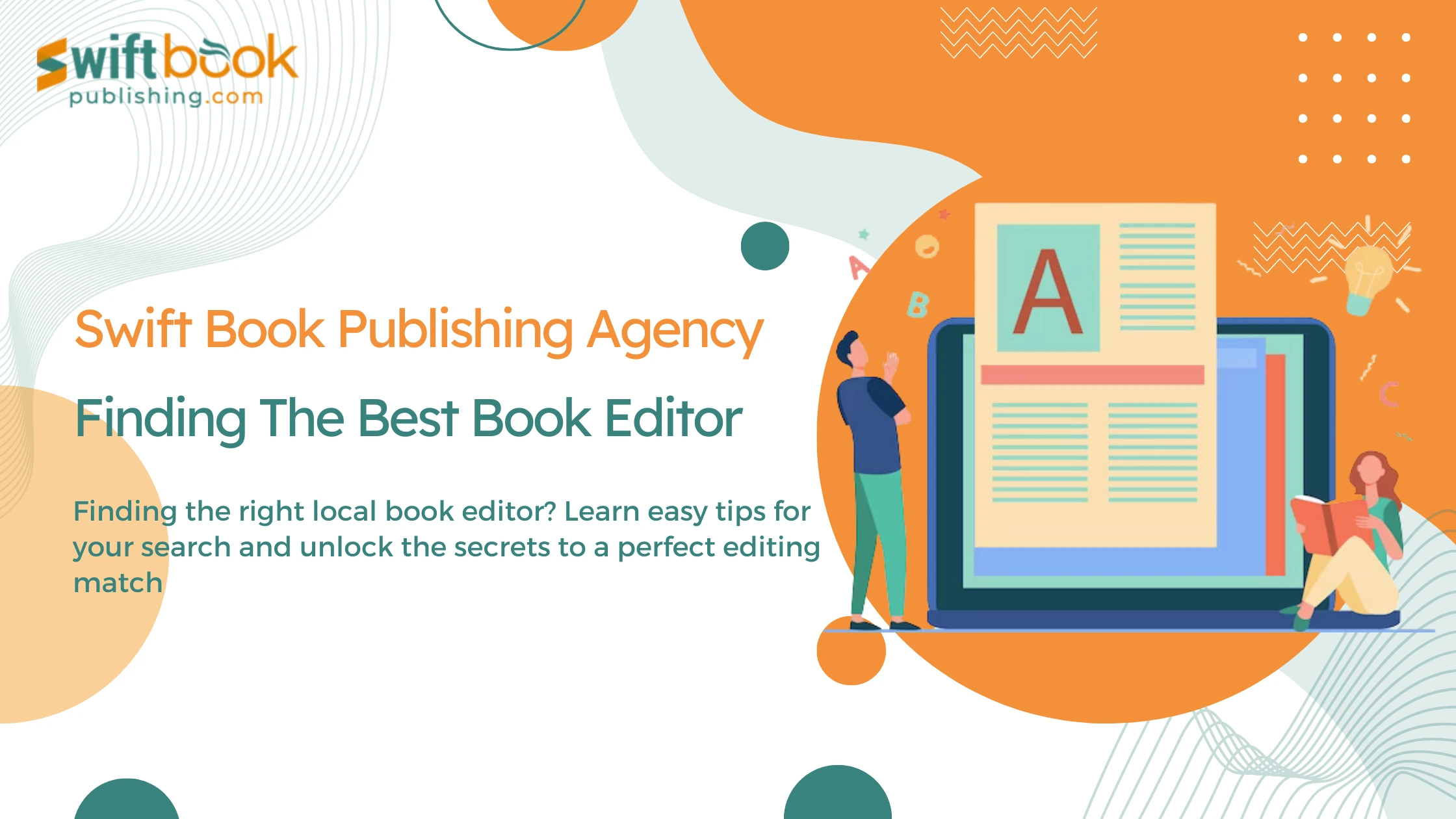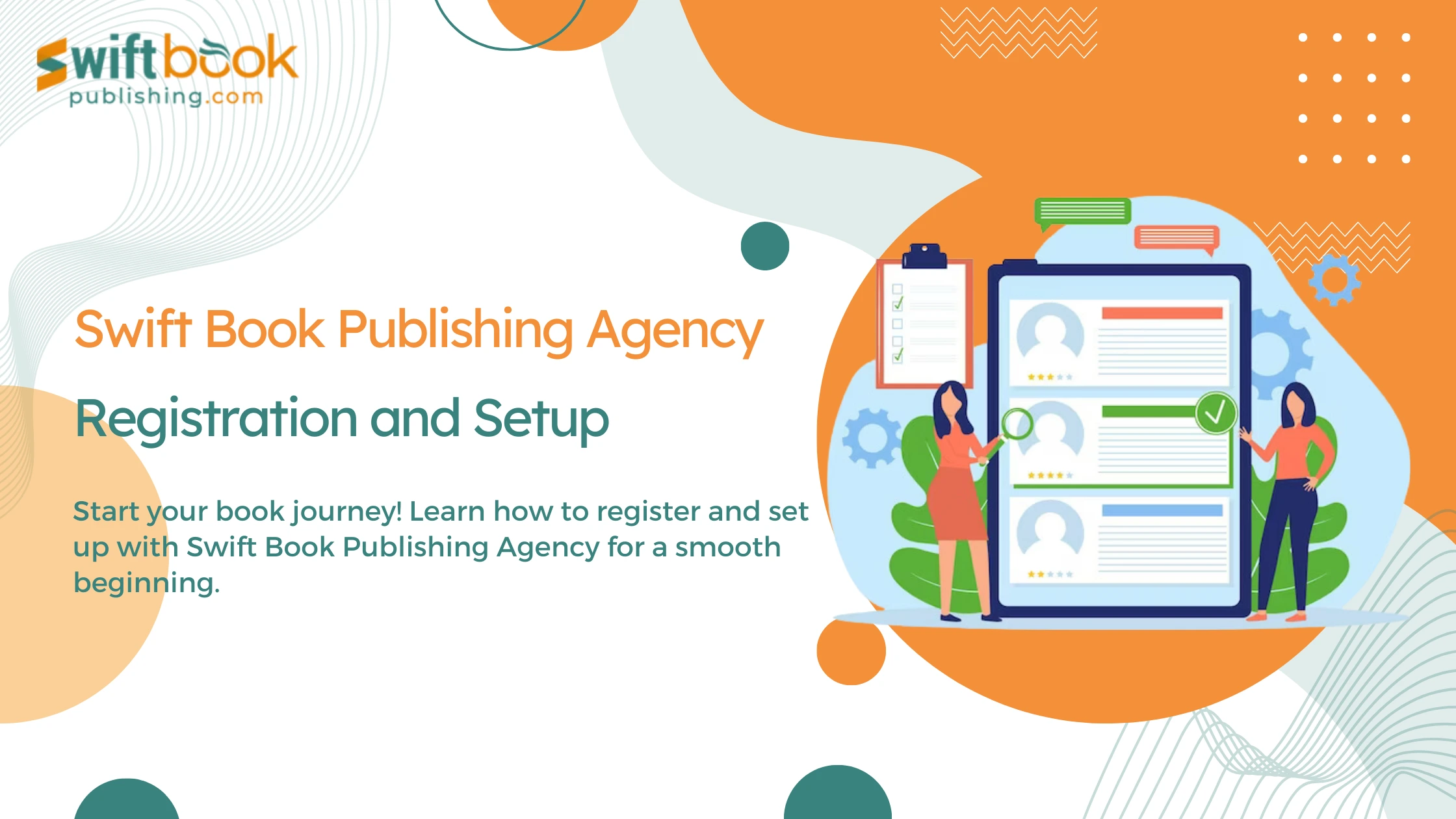Starting the process of publishing a book can feel like an unfamiliar territory, especially for new authors. Whether you’re aiming for a traditional publishing deal or looking to self-publish, the path is filled with questions:
How does publishing a book work? And perhaps most importantly, how do you get started?
Many first-time authors experience anxiety about the overwhelming steps involved, from polishing their manuscript to marketing their book. Others might worry about not knowing the right steps or fear rejection from traditional publishers. These concerns are valid but surmountable.
This blog will serve as your comprehensive guide to how to start publishing a book, taking you through the necessary steps, strategies, and options available in modern book publishing.
understanding how a book publisher can help you in book publishing or how to manage the process on your own will put you on the right path.
By the time you reach the end of this blog, you’ll not only have a solid grasp of how publishing a book works, but you’ll also be equipped with actionable insights to make the right decisions for your specific goals.
Following Steps On How To Start Publishing A Book
Essential steps are involved that I have described in this section. These Step may help
Step 1: Finalizing Your Manuscript for Publishing
Before diving into how to start publishing a book, the very first step is finalizing your manuscript. This is a critical phase, as publishers or readers won’t take your book seriously if it isn’t polished to professional standards. Whether you’re going the traditional route or opting for self-publishing, your manuscript needs to shine.
1.1 Self-Editing: The First Sweep
Your first responsibility is to edit your own manuscript. This may sound obvious, but many authors skip this step, leading to rushed submissions that are filled with mistakes. Here’s what to focus on during your self-editing process:
- Story Structure: Does your book have a beginning, middle, and end that flow well? Are there any loose ends or inconsistencies in your narrative?
- Character Development: Have your characters evolved throughout the book? Do their motivations and actions make sense within the story’s context?
- Clarity and Style: Is your writing clear, and does it align with the tone you want to set? Are there any redundant phrases, wordy sections, or confusing parts?
- Grammar and Typos: While you may hire a professional editor later, it’s important to catch as many grammatical errors as possible during your self-editing.
Self-editing can take time, but it’s a crucial step that sets the tone for the rest of the book publishing process.
1.2 Professional Editing: A Non-Negotiable Investment
No matter how seasoned a writer you are, professional editing is essential. Even if you’re self-publishing, hiring a professional editor will make sure your manuscript is polished to industry standards.
There are several types of editors you might consider:
- Developmental Editors: These editors focus on the overall structure of your manuscript, helping with plot development, pacing, and character arcs.
- Copy Editors: Copy editors focus on grammar, punctuation, and style consistency.
- Proofreaders: Proofreaders take care of the final pass, catching any remaining typos or minor errors.
Investing in a professional editor is especially crucial if you’re considering submitting your manuscript to traditional publishers. In this case, a refined manuscript increases your chances of acceptance. If you’re self-publishing, the quality of your book will directly impact your reviews and sales.
Step 2: Choosing Your Publishing Route: Traditional vs. Self-Publishing
One of the most important decisions you’ll make is choosing between traditional publishing and self-publishing. Both paths have their own advantages and challenges, and the right choice depends on your goals, resources, and vision for your book.
2.1 What is Book Publishing? Traditional vs. Self-Publishing Explained
What is book publishing? Simply put, it’s the process of producing and distributing a book to the public. The two primary routes for how to start publishing a book are traditional publishing and self-publishing, both of which we’ll explore in detail below.
- Traditional Publishing: This route involves submitting your manuscript to a publisher, who will then handle everything from editing to distribution. In exchange, you give up a portion of the royalties and some control over the creative process.
- Self-Publishing: Here, the author is in control of every aspect of publishing, from editing to marketing. The upside is higher royalties and full creative control, but the downside is you’re responsible for every part of the publishing process, including financing your own project.
Understanding how does publishing a book work in both traditional and self-publishing formats will help you make an informed decision based on your objectives.
2.2 Traditional Publishing: How Does It Work?
In traditional publishing, the process begins by submitting your manuscript to a literary agent or directly to a publisher. The publisher typically takes full responsibility for producing and marketing the book in exchange for a portion of the profits. But getting a publisher to take on your book isn’t easy.
2.2.1 Securing a Literary Agent
In most cases, securing a literary agent is a crucial step toward traditional publishing. Literary agents serve as a bridge between authors and publishers. They not only help you pitch your manuscript to publishers but also negotiate contracts and advance payments.
Here’s how to find a literary agent:
- Research agents in your genre: Agents often specialize in specific genres, so make sure to target those who are familiar with your type of book.
- Prepare a query letter: A query letter is a one-page document where you pitch your book to the agent. It should include a brief synopsis, your bio, and why you think the agent would be interested.
- Send sample chapters: Some agents request the first few chapters of your book or a detailed synopsis alongside the query letter.
Keep in mind that securing a literary agent can take time, and rejection is part of the process. However, once you have an agent, they will handle the next steps of pitching your book to publishers.
2.2.2 Working with a Publisher
Once a publisher accepts your manuscript, they will offer you a contract. The contract typically includes:
- Advance Payment: An upfront payment based on how well the publisher expects your book to sell.
- Royalties: A percentage of each book sale that goes to the author after the advance is paid off.
- Creative Control: The publisher will usually have the final say on editing, cover design, and even the title.
Publishers also take on the financial risk, paying for editing, cover design, printing, and distribution. This can be a major relief for authors who don’t want to handle these elements themselves.
2.2.3 How Does a Publisher Help You in Book Publishing?
If you’re wondering how a publisher can help you in book publishing, they offer a comprehensive range of services:
- Editing: Publishers employ professional editors to ensure that your manuscript is polished and ready for the market.
- Design and Formatting: From creating a professional cover to formatting the book for print and eBook versions, publishers handle the technical aspects of publishing.
- Marketing and Distribution: Publishers have established relationships with bookstores, online retailers, and media outlets, ensuring that your book is marketed effectively and available widely.
2.3 Self-Publishing: How Does It Work?
Self-publishing allows you to take full control of your book’s creation and distribution. However, you’ll be responsible for everything, from editing and design to marketing and sales. Understanding how publishing a book works when you’re managing the process yourself is crucial to your success.
2.3.1 Platforms for Self-Publishing
There are several platforms available for self-publishing, each with its pros and cons. Some of the most popular include:
- Amazon KDP (Kindle Direct Publishing): The go-to platform for many self-published authors. It allows you to publish both eBooks and paperbacks with global reach.
- IngramSpark: Specializes in both digital and print distribution. It’s widely used for getting physical copies of books into bookstores.
- Apple Books: Best for authors focusing on eBooks, as it gives you access to Apple’s massive digital audience.
Each platform has different royalty structures, formatting requirements, and marketing tools. For example, Amazon KDP offers up to 70% royalties for eBooks priced within a certain range, but you’ll need to format your book to meet their specifications.
2.3.2 Advantages and Challenges of Self-Publishing
The primary advantage of self-publishing is control. You decide everything—from the cover design to the price of your book. You also retain all the rights and a higher percentage of royalties than with traditional publishing. For authors with a specific vision or those who want to move quickly, self-publishing is often the best route.
However, the challenges are significant. You’re responsible for the costs of editing, design, and marketing. Moreover, distribution can be limited compared to what a traditional publisher can offer. Many self-published authors also find it difficult to gain the credibility and audience reach that traditional publishing provides.
Step 3: How to Start Publishing a Book: Selecting the Right Publishing Platform
After you’ve decided whether to go the traditional or self-publishing route, the next step in learning how to start publishing a book is choosing the right publishing platform. Each option comes with its own set of tools, audiences, and royalty structures, so your decision should be based on your goals and budget.
3.1 Choosing the Best Platform for Traditional Publishing
If you’ve chosen traditional publishing, you won’t need to pick a platform yourself. Your publisher will likely handle everything, from printing to distribution. However, it’s still important to understand the different platforms they might use.
- Large Publishing Houses: These include companies like Penguin Random House and HarperCollins, which have extensive distribution networks. If you’re lucky enough to land a deal with one of these giants, your book will likely be available worldwide.
- Small Presses: Independent publishers can offer a more personalized experience and may specialize in your genre, but they usually have smaller budgets and more limited distribution channels.
3.2 Choosing the Best Platform for Self-Publishing
For self-published authors, the platform you choose will directly impact your success. Here are the top platforms for self-publishing:
- Amazon KDP: With the largest eBook market share globally, Amazon KDP is an obvious choice for self-published authors. It’s user-friendly, has great visibility, and offers competitive royalties.
- IngramSpark: If you want your book to be available in physical bookstores, IngramSpark is one of the few platforms that can distribute both print and digital copies widely.
- Barnes & Noble Press: Focuses on both eBook and print publishing, offering self-published authors access to one of the largest bookstores in the U.S.
Step 4: Preparing Your Book for Publishing
Once you’ve finalized your manuscript and selected a publishing route, the next step in how to start publishing a book is preparing your book for publication. This phase is critical in ensuring that your book is presented professionally and is ready for both digital and physical distribution.
4.1 Book Design and Formatting
Whether you’re self-publishing or working with a traditional publisher, the visual and structural design of your book is essential to its success. Here’s what you need to focus on:
- Cover Design: Your book cover is the first thing a potential reader will see, and it needs to make an impact. If you’re working with a traditional publisher, they will likely handle this for you. However, if you’re self-publishing, hiring a professional cover designer is a must. Many readers judge a book by its cover, so make sure it’s visually appealing and fits the tone of your book.
- Formatting: Whether you’re publishing an eBook, paperback, or hardcover, formatting is crucial. Each platform (such as Amazon KDP or IngramSpark) has its own specifications for things like margin size, fonts, and layout. A poorly formatted book can result in a negative reading experience and bad reviews. Consider hiring a professional formatter if you’re not familiar with book formatting tools.
4.2 ISBNs and Copyrights
One of the most important steps in preparing your book for publishing is obtaining an ISBN (International Standard Book Number) and securing the copyright.
- ISBN: An ISBN is a unique identifier for your book, which allows it to be found by libraries, bookstores, and online retailers. If you’re self-publishing, you’ll need to purchase an ISBN for each format of your book (e.g., one for the eBook and one for the paperback). Some platforms, like Amazon KDP, offer free ISBNs, but it’s worth buying your own if you want to retain full control.
- Copyright: By default, as soon as you write your book, you own the copyright. However, registering your copyright officially with your country’s copyright office can offer you additional legal protection. This step is particularly important if you’re planning to distribute your book internationally.
4.3 Pricing Your Book
Pricing is a critical aspect of the book publishing process that can significantly affect your sales. Your pricing strategy will depend on several factors, such as your genre, target audience, and the platform you’re using.
- Traditional Publishing: If you’re working with a traditional publisher, they will typically set the price of your book. However, you may have some input, especially if you have a good relationship with your publisher or literary agent.
- Self-Publishing: When self-publishing, you have full control over your book’s price. You’ll need to consider the costs involved (editing, design, marketing) and balance that with a price that your target readers will be willing to pay. Most self-publishing platforms allow you to experiment with pricing, so don’t be afraid to test different price points.
Remember that eBooks tend to be priced lower than paperbacks or hardcovers, and pricing your eBook competitively can help boost your overall sales, especially if you’re a new author.
Related Blog: The Write Path: Self-Publishing vs. Traditional Publishing
Step 5: Marketing and Promoting Your Book
Writing and publishing a book is just the beginning. One of the biggest challenges new authors face is marketing their book effectively. Without proper promotion, even the best-written books can fail to reach their audience.
5.1 Creating a Book Launch Plan
A successful book launch requires a well-thought-out plan. This involves not just releasing your book, but creating buzz before and after its release. Here are the key elements of an effective book launch:
- Build an Author Platform: If you haven’t already, create an author website and establish a presence on social media. Your platform is where you’ll engage with readers, share your writing journey, and promote your book.
- Email Marketing: Building an email list is one of the most powerful tools for promoting your book. Start collecting email addresses of interested readers early on and send regular updates leading up to your book launch.
- Pre-Orders: Platforms like Amazon KDP allow you to set up pre-orders for your book, which can help build momentum before your official release.
5.2 Leveraging Social Media
Social media can be one of your most valuable tools for marketing your book. Platforms like Instagram, Twitter, and Facebook offer opportunities to connect with readers and share updates about your book’s progress.
- Instagram: Share visually appealing content, such as cover reveals, behind-the-scenes writing updates, and book launch countdowns.
- Twitter: Engage with readers and fellow authors by joining writing communities and using hashtags like #WritingCommunity or #AmWriting.
- Facebook: Create a Facebook author page or join book groups where you can promote your book and connect with potential readers.
Be consistent with your social media posts and engage with your audience to build excitement around your book.
5.3 Working with Book Bloggers and Influencers
Another effective way to promote your book is by working with book bloggers and social media influencers. Many bloggers specialize in book reviews, and their recommendations can help spread the word about your book to a larger audience.
- Request Reviews: Reach out to book bloggers in your genre and ask if they would be interested in reviewing your book. Be sure to send them a free copy, whether it’s an ARC (Advanced Reader Copy) or the final version.
- Giveaways and Contests: Partnering with influencers for giveaways or hosting your own contest can generate buzz around your book and encourage readers to participate.
Building relationships with influencers and bloggers in the book publishing industry can lead to long-term promotional benefits.
Conclusion
Learning how to start publishing a book can seem daunting, but with the right guidance, it’s a highly achievable goal. By finalizing your manuscript, choosing the right publishing route, preparing your book for release, and mastering the art of marketing and distribution, you can set yourself up for success in the book publishing world.
Whether you opt for traditional publishing or self-publishing, remember that each step of the process requires careful thought and strategy. While there may be challenges along the way, the reward of holding your published book in your hands and sharing your story with the world is worth every effort.
Frequently Asked Questions
1. How much does it cost to self-publish a book?
The cost of self-publishing a book can vary depending on several factors, including editing, cover design, formatting, and marketing. On average, self-publishing costs range from $1,000 to $3,000. However, it can be higher if you invest in premium services like professional editing and extensive marketing campaigns.
2. Do I need an agent to publish a book?
For traditional publishing, having an agent is highly recommended, as they can help you pitch your manuscript to publishers and negotiate better deals. However, if you’re self-publishing, you don’t need an agent. In fact, many self-published authors handle the entire process themselves.
3. Can I publish a book without editing?
While it’s possible to publish a book without professional editing, it’s not recommended. Editing is crucial to ensure that your manuscript is polished, free of errors, and ready for readers. Skipping this step can result in negative reviews, which can hurt your book’s reputation and sales.
4. How long does it take to publish a book?
The time it takes to publish a book depends on several factors, including the publishing route you choose. Traditional publishing can take anywhere from 12 to 24 months, while self-publishing can be completed in as little as a few months, depending on how quickly you prepare your manuscript and marketing materials.
5. What is the best way to promote a book?
The best way to promote a book is through a combination of digital marketing strategies, including social media promotion, email marketing, working with book bloggers, and leveraging paid advertising. Additionally, building an author platform and engaging with readers early on can boost your chances of success.


